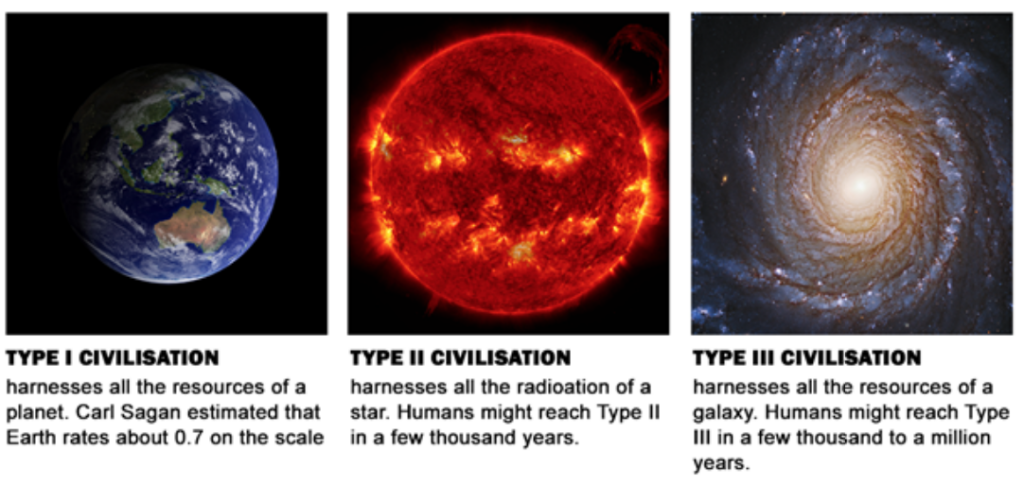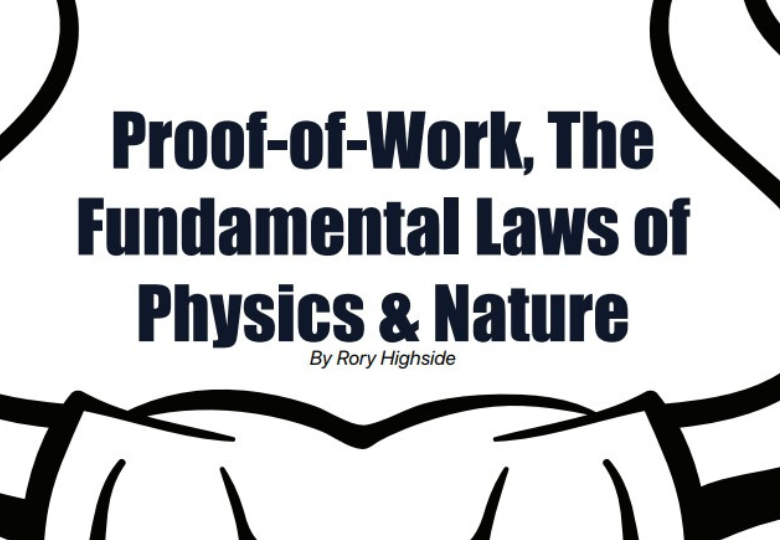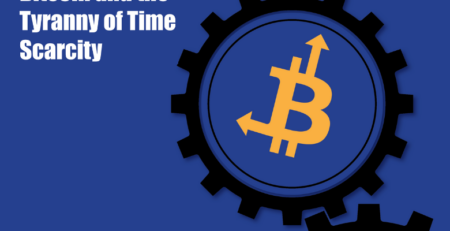Proof-of-Work
Part 1: The Fundamental Laws of Physics And Nature
Almost since the dawn of Bitcoin, there has been a hot debate over the value of Proof-of-Work in cryptocurrency systems, and the apparent wasteful use of energy by Bitcoin to secure its system will one day destroy the Earth. Unfortunately, there still remains a basic misunderstanding of the value of this Proof-of-Work, and the fundamental relationship to energy and work that makes up any and every system in the known universe.
One of the least understood and oft-cited technologies of this crazy universe is the emergent complex system called Bitcoin, and thus by extension, the intrinsically linked Proof-of-Work that drives the engine under its hood, metabolising raw energy as its life force.
There are many ways to describe Bitcoin the system, bitcoin the product, and the relationship to the underlying Proof-of-Work, but an overview of how the Bitcoin system functions at a high level is;
“The network timestamps transactions by hashing them into an ongoing chain of hash-based proof-of-work, forming a record that cannot be changed without redoing the proof-of-work. The longest chain not only serves as proof of the sequence of events witnessed, but proof that it came from the largest pool of CPU power.” — Satoshi Nakamoto, The Bitcoin Whitepaper
The idea of Bitcoin was to create a reliable, decentralised network, upon which all transactions could be recorded & stored, that was able to be validated by anyone. The issue was: how do you manage a ledger of transactions amongst a globally distributed database, entirely without a central point of failure, with a set of users who may or may not be known to each other, in a potentially adversarial environment, all the while ensuring that consensus is practically always achieved?
The answer to this equation fundamentally lies in a unique method of solving the “Byzantine Generals Problem”, a thought experiment proposed while designing fault tolerant consensus systems to accurately replicate the state of systems in aircrafts.
Consensus & The Byzantine Generals Problem
Fundamentally, reliable computer systems must be able to handle malfunctioning components that can give conflicting information to different parts of the system.
This is exponentially harder when you begin to network multiple computer systems, across a distributed network, particularly when there is no “lead” or “authority”.
“This situation can be expressed abstractly in terms of a group of generals of the Byzantine army camped with their troops around an enemy city. Communicating only by messenger, the generals must agree upon a common battle plan. However, one or more of them may be traitors who will try to confuse the others. The problem is to find an algorithm to ensure that the loyal generals will reach agreement.” –The Byzantine Generals Problem, Leslie Lamport, Robert Shostak, and Marshall Pease
In distributed computing, consensus protocols are used to achieve accurate state machine replication. A state machine simply being a mathematical model of computation, and state machine replication is the general method of implementing a fault tolerant process to replicate these computing ‘states’ globally in a distributed system.
The Bitcoin blockchain is simply a time-stamped record of all state transitions, and the network itself is a decentralised time-stamp server, stamping the first transaction to spend a coin to solve the issue of double-spending in a system without a central coordinator.
Nakamoto consensus, the protocol created by Satoshi Nakamoto, achieves its solution to the Byzantine Generals Problem by utilising Proof-of-Work to provide an economic cost to becoming the leader i.e. the network participant that may, providing all rules are followed and consensus is achieved, update the state of the Bitcoin blockchain.
To update the state of Bitcoin, miners must first compete via Proof-of-Work to find the solution to a cryptographic puzzle that abides by the rules of the system, with the winner of this race becoming the newly appointed leader. Once found, the leader must then update the state in a way that conforms to all of the consensus rules of the system, or else it will merely be rejected by all other participants.
Proof-of-Work and Competition
aiding in the self-organisation of the Bitcoin system. Participants are economically incentivised to be honest, as adversaries who attempt to create inaccurate states merely waste resources attempting to defraud the system.
Proof-of-Work economically incentivises Bitcoin to become the ultimate arbiter of truth.
By utilising Proof-of-Work for both the security and the issuance mechanism, the Bitcoin system leverages the “selfish gene” that all living species have, in order to create a system that comes to collective agreement, whilst still working competitively. Bitcoin is the sum of its many subsystems, united to create a combinatory system; one that is led by Darwinian fitness in an elegant energy transforming race to secure its network, whereby in return for participation, miners are rewarded with (₿) bitcoin.
The product of this work, (₿) bitcoin, is exchanged for the trust and security that these miners deliver to the overall Bitcoin system, which becomes increasingly antifragile (and thus increasingly fitter) as these security network effects compound.
Miners, the warriors at the front line of Bitcoin’s defence system are evolutionarily fit to protect its value. They work hard securing the network, the state of its ledger, and the distributed timestamp server via an energy intensive exercise, hence they deserve to be paid accordingly for providing this impenetrable wall of thermodynamic potential. That this work is increasingly hard makes it unlikely that an adversary could outcompete the cumulative work provided by the honest, cooperative majority.
The symbiotic relationship miners have with Bitcoin forms a system that’s whole is greater than the sum of its parts; the apex Proof-of-Work collective.
Why Proof is Important
Work exists in every and all systems known to man, and the fundamental constant of the universe is that this work always requires energy. Energy is merely the ability to bring about change i.e. perform work. The more energy that exists in a system, the more thermodynamic potential, or simply put, the more useful work we can perform, hence the more value it can provide.
It is therefore a universal truth that all work has a measurable cost of energy transformation due to the very nature of the universe, and the laws of thermodynamics. It is with these laws that we underpin Bitcoin’s Proof-of-Work.
Proof-of-Work is the unforgeable record of expended time and resources, therefore we can define Proof-of-Work as merely demonstrated proof-of-time-and-resources. This expenditure of time and resources subsequently give us a simple mechanism to measure production cost by, and whereby to secure and distribute the product of this work. It is through this procedure that we enact what we can describe as unforgeable costliness:
“(1) find or create a class of objects that is highly improbable, takes much effort to make, or both, and such that the measure of their costliness can be verified by other parties.
(2) use the objects to enable a protocol or institution to cross trust boundaries”
– Nick Szabo, Antiques, Time, Gold, and Bit Gold
Providing proof of this work creates an unforgeable record of expended energy utilised to secure, and to remove entropy from within the Bitcoin accounting system. Bitcoin metabolises this provided energy to make its heart beat roughly every ten minutes. Upon this beat, that is, the finding of a new block, Bitcoin broadcasts its latest state to all nodes in the network, flooding the system with the latest block like a virus, until all nodes reflect its current state.
The result of Bitcoin’s redundancy in state being duplicated tens of thousands of times across the entire planet, is to make an almost completely impervious, and indestructible system. One that could survive even a nuclear holocaust. Bitcoin is the unkillable cockroach that may outsurvive mankind itself in some form. Wherever even a single copy of Bitcoin exists, the network can yet again be bootstrapped, however difficult the process may be.
Bitcoin: a self-expanding, self-replicating, self-organising, nuclear-proof, distributed accounting system for the digital-age.
Energy
Energy is the unit of all life, the constant that is utilised within all systems to perform useful work, it is the fundamental currency that all life transacts with. This energy is a necessary tool utilised in the act of rearranging matter and information. All energy is bound by the unflinching laws of thermodynamics, meaning energy can never be destroyed, merely transformed.
That work must have a measurable energy cost, is due to these inherent laws of the universe, physics, and thermodynamics. These absolute, universal laws mean there is no such thing as a free lunch…ever. Therefore, we can demonstrate Bitcoin is secured via proof of the undeniable laws of thermodynamics that bind our universe, eating energy to sustain its metabolism, transforming information, proliferating, and self-organising its system.
“Bitcoin is the first example of a new form of life…It lives and breathes on the internet. It lives because it can pay people to keep it alive. It lives because it performs a useful service that people will pay it to perform. It lives because anyone, anywhere, can run a copy of its code. It lives because all the running copies are constantly talking to each other. It lives because if any one copy is corrupted it is discarded, quickly and without any fuss or muss.” – Ralph Merkle
World Kilowatt Dollars
The great futurist and scientist Buckminster Fuller wrote of an energy backed currency in his novel Critical Path in 1981, with a prophetically accurate description of the DNA within the Bitcoin system.

“In this cosmically uniform, common energy-value system for all humanity, costing will be expressed in kilowatt hours, watt-hours, and watt-seconds of work.
Kilowatt-hours will become the prime criteria of costing the production of the complex of metabolic involvements per each function or item.
These uniform energy valuations will replace all the world’s wildly intervarying, opinion-gambled-upon, top-power-system-manipulatable monetary systems.
The time-energy world accounting system will do away with all the inequities now occurring in regard to the arbitrarily maneuverable banker-invented, international balance-of-trade accounting”
– Buckminster Fuller
Bitcoin Time-Energy Accounting and Thermodynamics
The Proof-of-Work under the hood of the Bitcoin security and rewards system provides one of the most powerful, albeit novel uses of modern cryptographic and computing technology; utilising modern silicon and consuming vast sums of energy to find a cryptographic needle in the haystack that can never be forged or simulated.
Miners race to find this exponentially difficult and unforgeable hash collision that is less than, or equal to the current target of the network. The subsequent rate of this computation effort we can define and measure is known as hashrate.
Hashrate (Hash per second, H/s) in Bitcoin is an SI-derived unit (i.e. derived from the base units specified by the International System of Units) representing the number of double SHA-256 computations performed in one second. The H/s unit is also part of a common measure of a Bitcoin miner’s electric efficiency in the term watts/TH/s, denoted as W/TH/s. One watt being exactly equal to one joule/s (more on this later), a measure that can also be expressed as J/TH i.e. joules per trillion hashes.
As of 2019, a current generation Antminer S17 Pro has an efficiency of 49.5J/TH, and this efficiency will likely continue to increase with time as technology progresses – although note that we are currently entering a maturation stage of ASIC design, whereby we begin to approach the law of diminishing returns, and the physical limitations of chip design due to electrical resistance approaching smaller nanometer scales.
In October 2019, the Bitcoin system was secured by a seven-day-average of 98 Exahash of computation, that is a combined global hashrate of 98 Quintillion H/s, or 98,000,000,000,000,000,000 H/s. Although constructed for a very specific task, to put this in comparison to modern supercomputers, the fastest computer in the world is currently the IBM Summit at 200 Petaflops, while the Bitcoin network is currently hashing at a speed of 80,704,290 Petaflops, more than four hundred thousand (400,000) times faster.
SHA-256 hash results are pseudo-random, meaning they give the same result for the same input, but by changing the input even slightly, we will get a completely different and unpredictable (pseudorandom) result. Only by miners finding a low enough hashed value in the pseudorandomness, and constructing a valid block meeting all consensus protocol rules, will your block be accepted by the Bitcoin system and net the product of the block reward; the sum of the current block subsidy (nSubsidy) and transaction fees (nFees).
The result is a new block containing transactions that are mined roughly every ten minutes, updating the global Bitcoin state, thereby returning the state to zero (or as close to) entropy. The artifact of this state change is the Bitcoin blockchain (time-energy-chain) and bitcoin (time-energy).
The whole is much greater than the sum of its parts, the self reinforcing Bitcoin system of rewards is a conglomerate of subsystems ultimately responsible for creating and securing a self-replicating, self-organising, sovereign, time–energy world-accounting-system.
We can describe the complex self-organising Bitcoin system as such;
Bitcoin’s network is secured by a process called Proof-of-Work more commonly known as mining. Mining is merely the computation of cryptographic hashes by specialised mining hardware to solve an unforgeable puzzle. The double SHA-256 hashing utilised for this function also underpins the Bitcoin block structure, with each transaction having a corresponding hash that is itself hashed (sometimes several times) together to form the Merkle root contained inside the block header. This header is utilised within the cryptographic computational puzzle they seek to solve, and contains the header of the previous block, therefore linking each block together cryptographically, making forgery probabilistically impossible without employing the energy required to perform a full rewrite.
The produced hashrate results in the transformation of energy and time, or work, at which cost we can measure in joules. Energy is transformed in Bitcoin’s perpetual quest to remove entropy from, secure, and replicate its state in perpetuum.
In this entirely decentralised system there is no central-authority, instead the nodes form a decentralised agreement (consensus) through a protocol that hinges upon Proof-of-Work to secure it. The Proof-of-work functions as Sybil resistance for the network by making changes to the ledger artificially expensive, and creating a scenario where attackers would have to irrationally spend excessive amounts of time and resources to compete against the honest majority of miners.
Sybil Attack:
Where an entity creates false identities (or nodes) within a system in an attempt to gain influence over the network. A network’s vulnerability to sybil is determined by how cheaply you can create these identities.
Proof-of-Work secures and provides the energy to fuel the self-organising, self-replicating energy metabolising network, creating part of a feedback loop of network effects that sustains its proliferation.
The cumulative work process progressively hardens the system’s security, building a digitally represented, impenetrable fortress of thermodynamic potential, that not only thwarts would-be adversaries, but converts them into supporters of the bitcoin time-energy accounting system.
As each successive block is found, the proof of this work compounds and crystallizes into time, resulting in the artifact called the Bitcoin blockchain, the product of the miner’s hash computations and the network’s consensus rules; a secure, verifiably accurate, cryptographically-linked chain of blocks, transactions, and accumulated work dating back to the genesis block.
You can visualize this as a cryptographically linked time-energy-chain stretching back to genesis i.e. time zero, the creation of the first block. The Bitcoin system self-organises by determining that the correct chain is the one with the most cumulative Proof-of-Work meeting its inherent consensus rules, making a successful attack’s requirement to meet this cumulative work, and thereby becoming increasingly difficult as the network effects grow in mass and value.
Emission Schedule
The Bitcoin system from its inception at the genesis on 2009-01-03 was given an emission rate of exactly 50 bitcoins per block subsidy, delivered at roughly once every 10 minutes to miners via the block reward; the product of the block subsidy and transaction fees (block reward = nFees + nSubsidy).
The half-life cycle of the nSubsidy is once every 210,000 blocks (roughly 4 years), at which time nSubsidy emission rate is reduced by a factor of one half. This emission decay process continues each half-life cycle until no more bitcoin are produced at the absolute limit of 21,000,000 units.
At this point of maturation in the Bitcoin life-cycle, only nFees remain as the economic incentive to mine, and thus Bitcoin’s gravity must increase accordingly to sustain this economic system, with only transaction fees subsidising hashrate by roughly 2140. This monetary policy is intrinsic to Bitcoin and hardcoded into the system to remain entirely immutable, and impenetrable to top-down control.
The Bitcoin Metabolism
The thermodynamic potential and the subsequent hashrate securing the system has a direct relationship with the Bitcoin mining difficulty; as the hashrate rises or falls, thus does the security and difficulty to mine a block. This mechanism produces a stabilisation effect on block times, and creates a network that self regulates its metabolism i.e. the rate of which it produces blocks and consumes energy.
Every 2016 blocks (roughly two weeks) the difficulty adjustment algorithm regulates based on the average hashrate of the prior 2016 mined blocks. This results in Bitcoin creating a predictable issuance of roughly ten minutes per metabolic cycle, or six cycles per hour i.e. when each subsequent Proof-of-Work puzzle is solved. The subsystem controlling this cycle could therefore be considered the internal Bitcoin metabolism, keeping its metabolic rate, or heartbeat, ticking along to roughly every ten minutes, regulating its production in perpetuum.
This halflife and metabolic rate creates a stock-to-flow of bitcoin that is entirely predictable, and with the subsequent hard limit to production, the bitcoin produced is the most verifiably scarce commodity to ever come into existence. The requirement of ever additional energy and time to produce the same result as competition increases bolsters both the systems security, and its hardness i.e. the difficulty at which it is to produce.
The sum of Bitcoin’s mining difficulty system and its hardcoded monetary policy giving it an absolute scarcity combine to produce unforgeable-costliness.The culmination of this security and incentives model is Bitcoin, a cryptographically secured system of rewards that gives us an ability to abstract time and energy, thereby store, trade, or transport it through time and space securely in the digital-realm, forever along the the Bitcoin system’s time-energy-chain.
The product of this unforgeable thermodynamic energy transformation (or work performed) to secure the Bitcoin network is bitcoin(₿): a digital commodity that is granularly divisible, fungible, incorruptible, transportable, and counterfeit-proof, with an absolute scarcity of 21,000,000 ₿ units.
Part 2: Why Thermodynamics matter.
In the first half we covered the scientific processes in the Bitcoin system and its energy use, in this half we will relate this to physics, thermodynamics, and the universe around us…
Energy Of The Gods
Energy is the currency of life, the fundamental key to everything, at all scales of the universe. The macro progress of civilisation, the Kardashev scale, is merely a scale to measure a civilisations total potential energy capture. Therefore, it makes logical sense that the monetary system of a technologically evolved type I civilisation is fundamentally based on the construct of codifying energy, time, and cooperation. We cannot begin to approach a Type I civilisation without shifting our collective thinking to a universe of post-scarcity.
It’s evolution baby…
Bitcoin, the apolitical time-energy-chain, is the next logical step in human civilization’s progression and social self-ordering, uniting the human race with self-interest and economic incentives by codifying time, energy, and cooperation, hardening Earth’s resolve to act as one Spaceship. United we stand, divided we fall, destroying the earth with wanton destruction caused by burning fossil fuels.

Type I Civilisation: Is a civilization that can harness the entirety of the energy that falls on its planet from the parent star (for Earth-Sun system, this value is close to 7×1017 watts), which is more than five orders of magnitude higher than the amount presently attained on earth, with energy consumption at ≈4×1019 erg/sec (4 × 1012 watts) – Wikipedia
What the hell has thermodynamics got to do with anything, especially Bitcoin?
To understand how these abstract concepts of thermodynamics, physics, Bitcoin, and Proof-of-Work gel together at the very genetic level, you need at least a cursory understanding of arm-chair physics and thermodynamics.
First, We Must Define Work
Work is merely the transfer of energy from one place to another, or from one form to another. To picture this, imagine that the universe is constantly at work around us at the quantum, atomic, and even at macro scale. Energy is everywhere, and we can tap into this and harness it to produce useful work, products, information, or electrical energy (electricity).
The Joule of The Crown
One way we can measure the magnitude of this work is in joules, which is a derived unit of energy used in the International System of Units. 1 kilowatt being 1000 watts and 1 hour being 3600 seconds, therefore 1 kilowatt-hour of electricity is equal to 3,600,000 joules of energy.
1 joule is the energy dissipated as heat when an electric current of 1 ampere passes through a resistance of 1 ohm for 1 second. This transformation of energy can be described simply as the laws of physics and by extension thermodynamics.
First law of thermodynamics, or the law of conservation.
(Energy of a Closed System ΔU) = (Q / Heat) – (W/ Work)
Or
ΔU = Q – W
The first law of thermodynamics states the change in the internal energy ΔU of a closed system is equal to the amount of heat ‘Q’ supplied to the system, minus the amount of work ‘W’ done by the system on its surroundings.
The Second Law of Thermodynamics
In essence the second law states that all closed systems gravitate towards maximization of entropy (therefore is ever increasing), energy must be added to a system to overcome this natural tendency towards entropy.
Entropy = order and disorder
Entropy is simply the measure of the distribution of matter and/or energy, information, or, how spread out and disorganised it is. Energy is really only useful when it’s ordered and clumped together, so the more concentrated and ordered(or the lower the entropy), the higher the potential energy output, therefore increasing its ultimate usefulness to perform potential work.
Yeah, Science!
Essentially thermodynamics means you can only ever get as much out as what you put in, and you can never get as much out as much as you put in.
One of the principles that guides the entire world around us is the law of conservation. This simply means the unflinching law of the universe is that energy cannot be created or destroyed, and that it is always conserved and transformed. If work is performed, energy is needed and heat is an obvious and necessary side effect (just think of friction), while the total energy of a closed system is always conserved.
One way to think about how these laws apply to our natural reality is; the universe is a closed system, and that the entropy of the universe is always increasing. The heat of the universe is dissipating, so the total energy stays constant. Therefore there is no such thing as waste in the universe system, only transformation.
We are all always in a constant fight with entropy, and the ultimate boss battle ends in the heat death of the universe. Heat is merely a form of kinetic energy we can measure in kelvins (K), or, heat is merely energy in transit. Absolute-zero (0 K, or −273.15 °C) is the lowest theoretically possible temperature on the thermodynamic temperature scale, where all thermal motion ceases, thus no heat energy remains.
The heat death of the universe is just such high entropy, that the energy is spread so far apart and is no longer useful for anything. It’s not absolute zero, but no more work, no more movement, no more life. Don’t worry it’s 10100 years away, but at this point in time there no longer remains enough heat energy to increase entropy. Time, the arrow that is the natural artifact of the universe’s entropy stands utterly still. Finito.
Chaos And Order
Both energy and information are both infinitely more useful when neat and ordered ie. when it has a low observed entropy. This is why the conversion of energy from sources such as fossil fuels has radically advanced our society, enabling the exponential expansion in networks of cities and economies.
Fossil fuels are burnt, transforming them into heat, this thermodynamic transformation of energy then powers giant mechanical steam turbines, the product of this mechanical work is in turn converted into electricity, and finally this electricity is delivered to your home as a useful product for your myriad of electronic devices. Science!
As this energy travels over long distances there is substantial amounts of entropy, this is due to the resistance and conductivity of metal creating heat and energy loss resulting in thermodynamic transformation. Electric energy (electricity) is merely useful energy that is transportable over somewhat long-distances.
Smashing The Coulomb barrier
Entropy is all around us and it requires vast energy to fight against its natural inclination to continually increase. This insane human fight against entropy to unlock thermodynamic potential is what will catapult us into the future, as humanity begins to not only harvest vast ambient energy, but eventually also mass produce fusion reactors.
In order to achieve nuclear fusion, particles must first be able to overcome the electric repulsion labeled “The Coulomb Barrier”, named after physicist Charles-Augustin de Coulomb. In order for a nuclear strong force to take over and undergo nuclear fusion, particles must first break this barrier. This new frontier of energy production will provide the required energy to smash the Coulomb barrier enmasse, capturing the Earth system’s abundant stored clean thermodynamic potential, and scaling our energy production exponentially.
Spaceship Earth must work together as one if we are ever going to overcome the devastating pollution that we have created in the Earth’s system, and to solve the immediate engineering challenges clean energy production poses. Scarce resource based energy creates a vast number of security and scarcity issues plaguing the dove and hawk geopolitics of the world, not to mention the burning of these resources threaten our very long term existence.
We have to believe in a world of abundance and not one of scarcity. Earth needs to band together to tackle the socio-economic challenges our shared world is facing, and cooperate in the race to clean up a damaged planet that we have needlessly abused with fossil fuels and wanton destruction.
Energy use is not the root of the systemic problem, energy is the currency of life that fuels the advancement of all civilisation. The current unscalable, destructive, pollutant paradigm of scarce fossil fuel burning for energy creation is the multi-trillion dollar problem plaguing mankind. We must cooperate to solve it.
Energy + Time + Cooperation
Bitcoin is an apolitical monetary system that codifies time, energy and cooperation, incentivising the human race towards maximal efficiency of the potential capture and conversion of energy into usable forms. The act of harnessing the abundance of our universe, fusion energy, the power of the stars and the gods. Fusion energy harnessed will catapult us towards the heavens as a civilisation, aiding as humankind begins our rapid ascent to interstellar demigods.
There Is No Such Thing As Scarcity, Only Thermodynamic Potential and The Arrangement Of Matter And Information
In theory, all states and distribution of matter are replicable, at the atomic and subatomic level, all matter is merely information and energy distribution. The deconstruction and reconstruction of matter is a technological problem, once solved (we’re working on it), there will be no longer a scientific absolute scarcity of any element in the universe. Through technological advancement, all matter will be able to be rearranged, therefore all matter and energy is abundant.
Only unforgeable digital scarcity can be absolute, therefore, only time and energy and the sum of their product have any quantitative value. Digital scarcity, the ability to remain unforgeable is the only scarce product of creation known to man.
Cambrian Abundance
The competitive need for efficient energy conversion, and the markets insatiable demand to trade will create a Cambrian explosion of abundance and creativity. An apolitical ‘energy renaissance’ driven by the free market demand to unlock thermodynamic potential.
Post-scarcity will bring about the cooperation of humankind as Spaceship Earth. The entire world should be radically increasing the efficiency of energy capture, and total consumption of energy to produce useful work, not seeking the reduction of total energy consumption per capita through draconian taxation measures. We can lean into a Type I civilisation and beyond without destroying ourselves in the process.
Advance humanity to the next level by cooperating, or burn the earth to the ground around us with fossil fuels.
The Self-Replicating, Self-Organising Bitcoin System
The Bitcoin system mechanisms are designed to self-replicate and self-organise, while its consensus protocol ensures replication is accurate, and that it’s perpetually trying to remove entropy from the state of Bitcoin; the artifact being the resulting blockchain and the product bitcoin.
The essence of the complex systems singular role is to be an arbiter of trust and truth in the face of adversity, to create a singular distributed current and historic state and order that all nodes can reach consensus upon. Zero entropy is the ideal state of the system. This entropy is instead moving to the growing unspent transaction outputs (UTXO) stored in the blockchain.
In the digital realm, the cost to rearrange information generally trends toward decreasing on the macro scale as compute becomes more efficient, thus this process to remove informational entropy will become increasingly more efficient over time. The gravity of bitcoin is increasing over time, increasing its economic mass and density leading to an upwards trending efficiency in its system.
Much has been studied about Bitcoin’s sustainability, though much is yet to be uncovered, but as Bitcoin’s heartbeat rings out every 10 minutes from now until eternity, we will all be it’s students.
Satoshi Nakamoto in his infinite wisdom codified trustlessness, cooperation, energy, time, commoditised it, democratised its access, and made it transportable through space and time in perpetuum. The sovereign self-organising system is designed in such a way as to provide its own governance away from any top-down influence or corruption.
Bitcoin is the peak product of evolution in technology, pure capitalism, economics, and the beauty of thermodynamics, all working together in a state of perfect synergy. Bitcoin can bring about the apolitical time-energy world accounting system Buckminster Fuller prophesied, steering Spaceship Earth to a post-scarcity reality.








